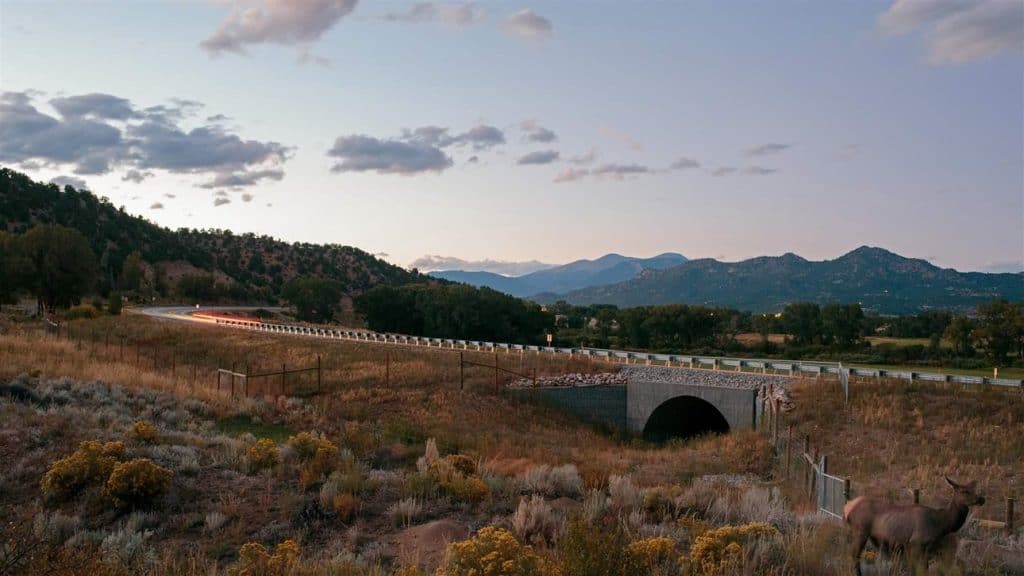Out with the old, and in with the new.
Court decision in Glenwood Springs Citizens’ Alliance v. U. S. Department of the Interior (D. Colo.)
On November 8, the district court denied a motion to dismiss the case by the Federal Defendants, allowing it to proceed with a claim that the BLM unreasonably delayed taking action to address unauthorized removal of limestone, in violation of a 1982 plan of operations, for a quarry on federal lands. The opinion is here.
New lawsuit
On November 23, plaintiffs filed a lawsuit against the Twisp Restoration Project on the Okanogan-Wenatchee National Forest. The complaint alleges failure to give adequate notice for public participation after changes were made following the 2021 Cedar Creek Fire. Among other issues, the complaint challenges the use of “condition-based management, which “makes it impossible for the public to adequately determine what trees will be cut, where, or in what amounts.” The lawsuit also states that there is scientific controversy over the use of thinning to manage wildfire risk, and that the Forest Service has been using the North Central Washington Forest Health Collaborative as an advisory committee in violation of the Federal Advisory Committee Act.
New lawsuit
Los Padres ForestWatch filed a lawsuit against the Los Padres National Forest for not releasing public records about the Ecological Restoration Project—a fire mitigation proposal that will impact roughly 235,495 acres of land – in a timely manner. They submitted a Freedom of Information Act request during the 30-day comment period in July. After a second request in November, they received a response confirming there are 3,726 pages of documents, but did not provide them. Normally compliance with FOIA requests must occur within 20 days, but plaintiffs allege that this lack of responsiveness is typical.
Settlement
The November 19 update discussed actions by the State of Arizona to place shipping containers on federal land along the border with Mexico and to sue the United States. On December 14, the Center for Biological Diversity filed a Notice of Intent to Sue the state for violating the Clean Water Act, and the U. S. Justice Department filed a complaint in USA v. Ducey (D. Ariz.) accusing the state of trespassing on federal land. On December 20, the State of Arizona filed documents in court agreeing to cease installing the containers in the Coronado National Forest, and to remove the containers already installed, in consultation with the Forest Service, to settle the case.
Notice of intent to sue
On December 16, WildEarth Guardians filed a notice of intent to sue the Forest Service and Fish and Wildlife Service regarding the effects of over-snow vehicle use on the Sierra Nevada red fox on the Stanislaus and Humboldt-Toiyabe National Forests. The species was listed as endangered in 2021, after OSV designations were made by these forests, and ESA consultation on the red fox has not occurred. The press release includes a link to the notice.
Court decision in Wild Virginia v. Council on Environmental Quality (4th Cir.)
This is the challenge to the Trump Administration’s 2020 changes in the regulations governing how federal agencies conduct reviews under the National Environmental Policy Act. On December 22, the circuit court affirmed the district court decision that the district court did not have jurisdiction to decide this case. The Biden Administration has since adopted the 2022 version of the CEQ regulations, which mooted plaintiffs’ case regarding some issues by returning to pre-2020 requirements for direct, indirect, and cumulative effects, and reasonable alternatives. Remaining issues may be addressed by additional pending changes by CEQ. The court rejected jurisdiction primarily because those issues are not ripe for review or plaintiffs lack standing since harm depends on future actions by other parties. This case was discussed earlier here.
Settlement and withdrawal in Wildlands Defense v. Brummett (D. Idaho)
On December 30, the Boise National Forest withdrew the Sage Hen Integrated Project, which covered 67,800 acres of land over a 20-year period, and explicitly used a “’condition based management’ scheme left over from the Trump administration that has been rejected by courts.” There were also endangered species issues. The withdrawal was required by a settlement of the litigation on October 19. That litigation was discussed here, where we speculated about the outcome (and now we can speculate about the Forest Service’s reasons for withdrawing it). The article includes a link to the withdrawal letter.
Withdrawal
On December 29, the Pacific Northwest Regional Forester withdrew the Flat Country Project on the Willamette National Forest. This was not the result of a lawsuit, but rather of the Biden Administration’s directive to conserve old and mature forest. The Forest Service indicated that the parts of the project most groups agree on will move forward, while other parts, such as the logging of the older trees, could be dropped.
Court decision in Rocky Mountain Wild v. U. S. Forest Service (10th Cir.)
On December 30, the circuit court upheld the district court’s finding that the Forest Service conducted a reasonable search for records associated with the Village of Wolf Creek Access Project on the Rio Grande National Forest. The request was filed in 2018 and yielded over 140,000 pages in 14,740 documents, and plaintiffs had challenged the file-searching process. The court allowed the Forest Service to choose the search terms it used. It also allowed the Forest Service to “claw back” two documents it released by mistake. The article has a link to the court opinion. The plaintiffs had recently won their lawsuit against the Forest Service on the merits, as discussed here.
New lawsuit: Alliance for the Wild Rockies v. Kaiser (D. Mont.)
On January 6, Alliance for the Wild Rockies and Native Ecosystems Council filed suit against the Black Ram Project on the Kootenai National Forest. Plaintiffs argue that the project will destroy grizzly bear habitat for the declining Cabinet-Yaak population with logging, prescribed burning and road building, in violation of the Endangered Species Act. The project includes 579 acres of “intermediate harvest” in designated old growth forest. The complaint includes a claim that the project fails to demonstrate it would comply with a forest plan standard for road density. The article includes this link to the complaint. Plaintiffs provide their views here.
Notice of intent to sue
On January 9, the Center for Biological Diversity filed a notice of intent to sue the Bureau of Land Management over cattle observed grazing in the recently designated critical habitat for this newly listed endangered species in Nevada. The article includes a link to the notice.
The same area is the site of a possible lithium mine (we have discussed prior litigation here), and the BLM cited the mining company for trespassing on the critical habitat five days after the U.S. Department of Energy announced a $700 million conditional loan to the mining company. The DOE said the loan was contingent on, among other things, the completion of an environmental impact statement.
New lawsuit
On January 9, the San Francisco-based Burning Man Project and four co-plaintiffs (Friends of Nevada Wilderness, Friends of Black Rock/High Rock Inc. and two local residents) filed a lawsuit in federal court in Reno accusing the Bureau of Land Management of violating NEPA in approving Ormat Nevada Inc.’s exploratory drilling within the Black Rock National Conservation Area, home to the annual Burning Man Festival. The lawsuit said Ormat has attempted to evade analysis of the geothermal power plants’ potential negative effects on the environment by segmenting the project, which limits BLM’s review to only the exploration stage of its plans. The proposed wells would be adjacent to a number of unique hot springs that are ecologically important and are relied upon by the local community for tourism.


